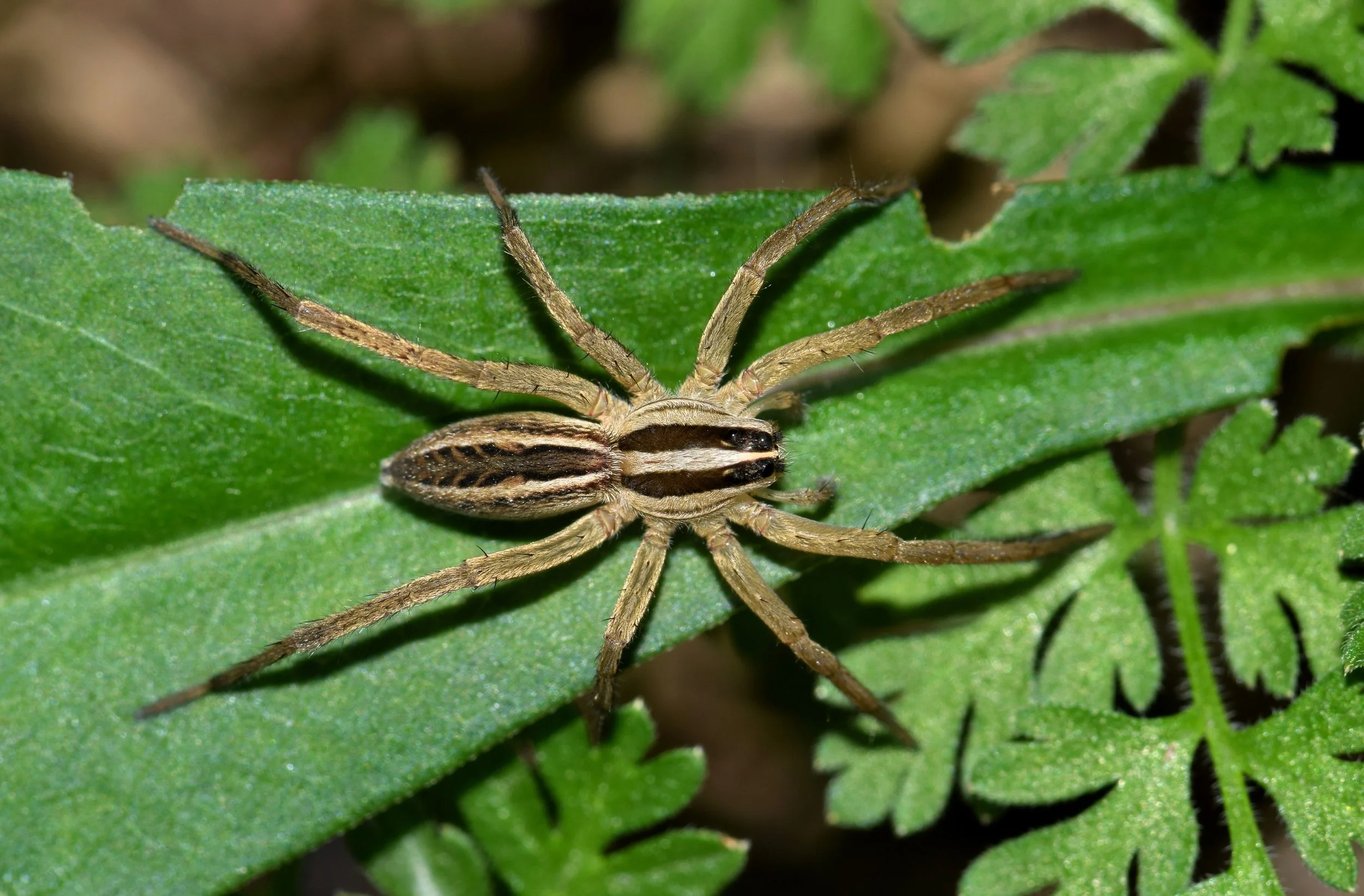Wolf Spiders in California: What You Need to Know
Seeing a large, quick-moving spider dart across the floor can startle anyone. In many California homes, that sudden blur often turns out to be a wolf spider — a common ground-dwelling hunter found throughout the state. Their size and speed tend to grab attention, but these spiders are far less threatening than they appear. Understanding how they behave and where they hide helps reduce worry and makes indoor encounters easier to manage. Many Californians also mistake wolf spiders for other brown spiders, especially when they aren’t sure whether brown spiders are poisonous or simply unsettling in appearance.
Because California is home to many look-alike spider species, people often confuse these harmless hunters with spiders that pose greater risks. Understanding how long spiders live and how their life cycle affects seasonal activity also explains why they appear more often during certain months.
What Do Wolf Spiders Look Like?
Wolf spiders have a distinct, rugged appearance. Their bodies are usually brown or gray with darker stripes across the back, similar to several California spider species found in yards and near foundations. Features that help identify wolf spiders include:
Brown or gray body with darker markings
Eight eyes arranged in three rows
Noticeable hair on legs and body
Strong, quick movement
Reflective eye shine in low light
Their strong legs are built for running rather than web-building, so they’re often found moving across floors instead of hanging in corners or ceilings. For Californians who worry about dangerous spiders in California, wolf spiders are not among the species considered medically significant. Their resemblance to certain ground spiders sometimes leads homeowners to wonder whether they’re looking at a tick bite or a spider bite, especially at a distance.
How Big Do Wolf Spiders Get?
Wolf spider sizes vary. Smaller adults may measure about half an inch in body length, while larger individuals may exceed an inch. Including legs, they can reach two inches or more. Their quick, sudden movements often make them seem even larger.
People sometimes mistake them for other ground spiders because of their coloring and speed, but once you learn their patterns and eye arrangement, wolf spiders are easier to recognize.
What Do Wolf Spiders Eat?
Wolf spiders are active hunters that chase insects instead of building webs. They feed on crickets, beetles, ants, roaches, flies, and other small pests found on the ground. Their presence indoors often means insects are entering as well, which is why some homeowners consider indoor spider repellent when both pests appear at the same time.
Can Wolf Spiders Bite?
Wolf spiders can bite, but they rarely choose to. Their instinct is to retreat, and a bite usually occurs only when one is accidentally pressed against the skin inside clothing, shoes, or bedding. Most bites cause mild redness or irritation and fade quickly. People who are more sensitive may experience stronger discomfort, though serious reactions are very uncommon. Wolf spiders may look intimidating because of their size and speed, but they are not aggressive and usually run at the first sign of disturbance. Californians familiar with spider infestations in Southern California often report that wolf spiders cause fewer issues than web-building species that gather indoors.
Where Wolf Spiders Live in California
Wolf spiders are found throughout California, from coastal regions and valleys to foothills and drier inland landscapes. They prefer ground-level habitats with good cover. Outdoors, wolf spiders often shelter in:
Tall grass and leaf litter
Mulch beds and soil cracks
Under rocks, wood, and yard debris
Shaded garden borders and landscaping edges
Around homes, they may hide in garages, sheds, crawl spaces, basements, and storage areas. Their movements increase during cooler months when prey becomes less abundant outdoors, which is also when other California spider species become more noticeable. This seasonal overlap can make wolf spiders seem more abundant than they actually are.
Preventing Wolf Spider Encounters
Reducing wolf spider activity indoors involves sealing entry points and eliminating hiding spots. Helpful prevention steps include:
Removing clutter from storage areas
Vacuuming corners and low-traffic spaces
Trimming vegetation that touches the home
Keeping firewood away from exterior walls
Reducing outdoor lighting that draws insects
Using sealed plastic bins
Installing door sweeps to block gaps
Some homeowners also pair these steps with natural methods focused on how to prevent spiders in the home, especially when dealing with consistent sightings.
Professional Spider Control for California Homes
Wolf spiders play an important role outdoors, but most homeowners prefer not to encounter them inside. When sightings become frequent or long-term prevention is needed, professional help provides the most reliable protection.
ProCraft Pest Control offers expert spider control services for California homes. Our team understands how local species behave, where they hide, and how to prevent them from entering or settling indoors. Whether you’re dealing with wolf spiders or other species common to California’s landscape, we provide safe, effective, and long-lasting solutions.
Contact ProCraft Pest Control today to schedule a professional inspection and get dependable, year-round spider protection.
Michael Furlong
I’ve worked in pest control since I was 20 and founded ProCraft in 2009. I help California homeowners understand common spider behavior and practical prevention. When I’m not inspecting homes or solving spider issues, I’m usually enjoying black coffee, an old 80’s movie, or time in the garage.

